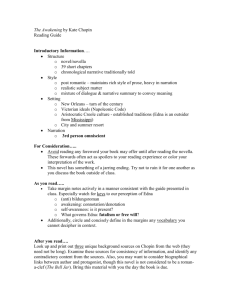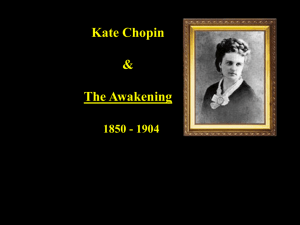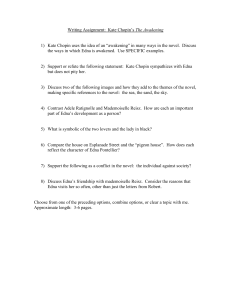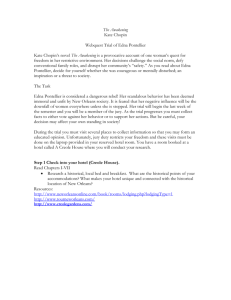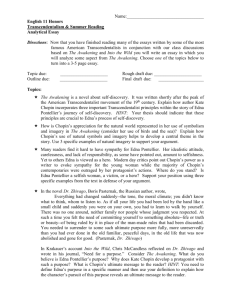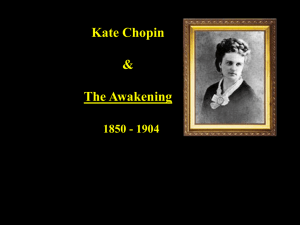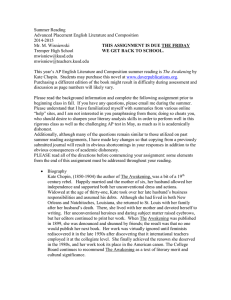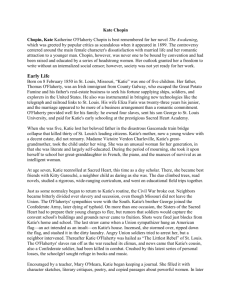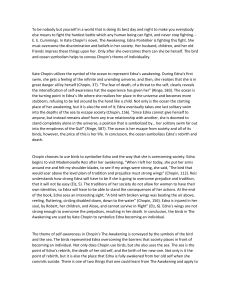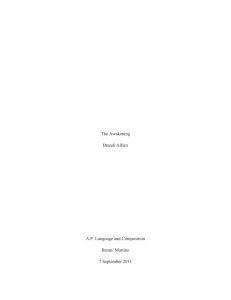Kate Chopin*s The Awakening - Greer Middle College || Building the
advertisement
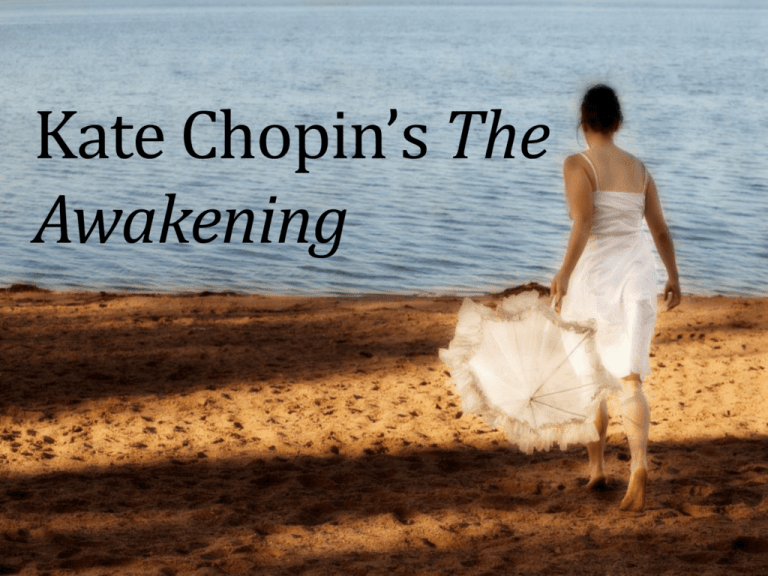
Kate Chopin’s The Awakening Kate Chopin (1851-1904) • • • • Born 1851 in St Louis, Missouri Spoke French and English Slavery part of daily life Married Oscar Chopin from Louisiana in 1870– lived in new Orleans 6 kids • Husband died 1882– Chopin never remarried but had other relationships • Wrote mostly about the South and French-American culture • Radical idea– a woman’s needs were important (women weren’t considered to be independent) Chopin Family Pictures Background: Women’s Rights • Napoleonic Code said that all of the wife’s "accumulations" after marriage belonged to the husband and that the husband automatically got custody of children in a divorce • Louisiana law claimed that • • • • a woman could not sign a legal contract other than her will could not initiate a lawsuit could not hold public office could not serve as a legal witness to any document • Others who could not do this included the blind, the deaf, the mute, children under 16, the legally insane, or those with criminal records Background: Creole Society • Creole culture (French and Spanish ppl in New Orleans) • very family-oriented • considered themselves an elite social class in New Orleans • Creole women, even if very poor, were not permitted to speak of poverty • expected Creole women to be • very religious, usually Catholic • modest and pure of thought but still able to talk frankly about sexuality and childbirth • enthusiastic mothers • good dancers • artistic by nature • good housekeepers • good conversationalists The Awakening: Key Facts • Published 1889 • Controversial! • Main premise: Woman’s journey to selfdiscovery away from traditional upbringing towards personal desires/needs. • Edna Pontellier (protagonist) realizes that her life is not what she wants, so she seeks to find self-fulfillment outside of her social duties/ responsibilities • Setting: Grand Isle (vacation resort), New Orleans– late 1800s The Awakening: Key Characters • Edna Pontellier- wife and mother of 2, seeks her own life outside of society’s accepted roles • Adele Ratignolle- socially ideal woman- Edna’s friend • Robert Lebrun- single man, Edna falls in love with him, but he doesn’t know how to respond • Alcee Arobin- charming man– known as a “player” in New Orleans; seduces Edna • Leonce Pontellier- Edna’s husband- often away on business; wealthy; cares about social expectations • Mademoiselle Reisz- unmarried/no kids, devotes life to art (piano); teaches Edna about independence Symbols • • • • • • • • Water/Sea Swimming Birds (caged, free, Pigeon house, broken wing) Art Music Lady in black Two lovers Farival twins The Awakening: Reviews • Then • “Trite and sordid” • “Essentially vulgar” • “Unhealthily introspective and morbid in feeling” • “. . .its disagreeable glimpses of sensuality are repellent" (from The Outlook,1899) • Contemporary (now) • “She’s one of those writers whose sense of craft puts her right on the edge of poetry. . . . The rediscovery of The Awakening came as a Godsend, the most incredible gift to the women’s movement” Prof. Elizabeth FoxGenovese, Emory Realism • Accurate imitation of life • Characters drawn to present the reader with illusion of actual experience • Topics include love, marriage, parenthood, infidelity, and death • Characters find life dull and are often unhappy, but find touches of joy and beauty in life Local Color/ Regionalism • A form of Realism • Devoted to descriptions of characters, dialect, customs, and geography of a specific setting. • Emphasizes setting and the character of the region instead of character of the individual. • Characters are usually there to add to the "feel" of the place (think Arobin, servants and residents at Grande Isle, Madame Ratignolle, etc). • Main character usually an outsider makes it easier for the reader to identify with them, because reader is outsider • Common plot involves tension between traditional and new ways of life, often symbolized by the intrusion of an outsider who is demanding something from the community. Regionalism in Art Feminism • Chopin denied that she was a feminist or a suffragette. • Her fiction repeatedly deals with female characters’ efforts to find place, love, and autonomy (independence) in a society that denies these needs. • Feminist theory • examines women’s social roles and lived experience • provides a critique of social relations– focuses on analyzing gender inequality and the promotion of women’s rights, interest and issues • depicts elements of oppression and patriarchy (male as primary authority figure, central to social organization)
